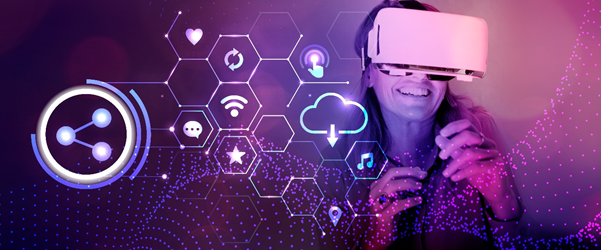
Augmented reality is a symbolic experience in which the real world is used as a window into a digitally existing virtual world. This can be done with web-based applications or by using specially designed hardware. While still new, some experts do not consider this technology to be fully mature yet, so it’s important to note how the future might change regarding its use.
What Is Augmented Reality?
Augmented reality is a technology that takes real-world objects and adds digital elements to them. This can be done in a number of ways, including through apps on smartphones and wearable devices or through overlays on physical objects. Augmented reality can be used for various purposes, including navigation, shopping, and learning.
The most common type of augmented reality is called “mixed reality,” where digital objects are displayed over the real world. This means that the digital objects used in such environments are not actually part of the physical environment but rather use 3-D computer graphics to make it appear that they are.
Virtual reality (VR), on the other hand, is a technology that uses 3D computer graphics to simulate an experience where one can interact with digital characters and environments, as well as manipulate them in a manner similar to how they would in the real world. The particular technology that this simulation takes place on is called a virtual reality device. Some examples of this are video game consoles, smartphones, and computers. The type of experience that can be created with a virtual reality device is called an augmented reality (AR) experience. Augmented reality (AR) is different from virtual reality in the sense that it does not have to simulate something. Instead, the system creating the AR simply makes use of information around you to give your vision a more realistic interpretation. It’s like when you put on your sunglasses in order for your eyes to interpret objects as if they were closer than they really are.
Applications of AR in Real World
Augmented reality is a technology that uses digital displays and software to overlay a person’s real-world environment with supplemental information or computer-generated images. AR can be used to enhance navigation and communication, education, training and work settings. Industries that could potentially benefit from augmented reality include manufacturing, construction, transportation, retail and service sectors.
AR is being used in a variety of ways by businesses to improve their customer experience and boost productivity. For example, McDonald’s in the UK is using AR to let customers order food through their smartphones without having to leave their seats. Additionally, Volvo has created an app that allows drivers to view detailed diagnostics on their vehicles while on the road.

AR is also being used to improve education. For example, schools have used Google Earth to teach geography and environmental science. AR is also being used in medical training, as it can be used to show patients 3D images of their injuries before they undergo surgery.
The applications of augmented reality are vast and continue to grow in popularity. As businesses continue to adopt AR for various purposes, the technology will become more commonplace and useful for everyday life.
What Are the Benefits of Augmented Reality Technology?
Augmented reality (AR) has been around for a while, but it’s only recently that it’s been gaining in popularity. AR is a technology that uses digital content to overlay it on top of what you see in the physical world. This can be used for a variety of purposes, including training and education, entertainment, and navigation.
There are a number of benefits to using AR technology. First, it can be used for training and education. This is especially useful for people who need to learn new information or skills quickly. AR can also be used to help people with disabilities access information or services they may not be able to use otherwise.
Second, AR can be used as an entertainment medium. For example, you can use AR to watch movies or play games. This is particularly useful for people who don’t have access to traditional forms of entertainment.
Third, AR can be used as a navigation tool. For example, you can use AR to find your way around a new location. This is especially useful if you’re unfamiliar with the area.
Overall, AR is a powerful technology with many potential benefits. It’s exciting to see how it will evolve over the next few decades.
Challenges in Augmented Reality Technology
Some people may find Augmented Reality technology to be a bit confusing and overwhelming. Some of its disadvantages may stand out for those who are not familiar with the technology. Augmented Reality technology overlays digital content on top of what is seen in real life. This can be helpful for learning or for navigation, but it can also be difficult to understand and use if the user does not have prior experience with the technology. Additionally, Augmented Reality technologies are often more expensive than traditional software or hardware, so they may not be affordable for everyone.
Conclusion
Augmented reality has been around for a few years now, but its potential for impacting the way we live and work is only just beginning to be realized. By providing us with an enhanced view of the world around us, augmented reality is changing the way we shop, learn, work, and play. As more and more businesses adopt augmented reality into their day-to-day operations, it’s clear that this technology has a lot to offer our society as a whole. So what are you waiting for? Start using augmented reality in your own life today!



